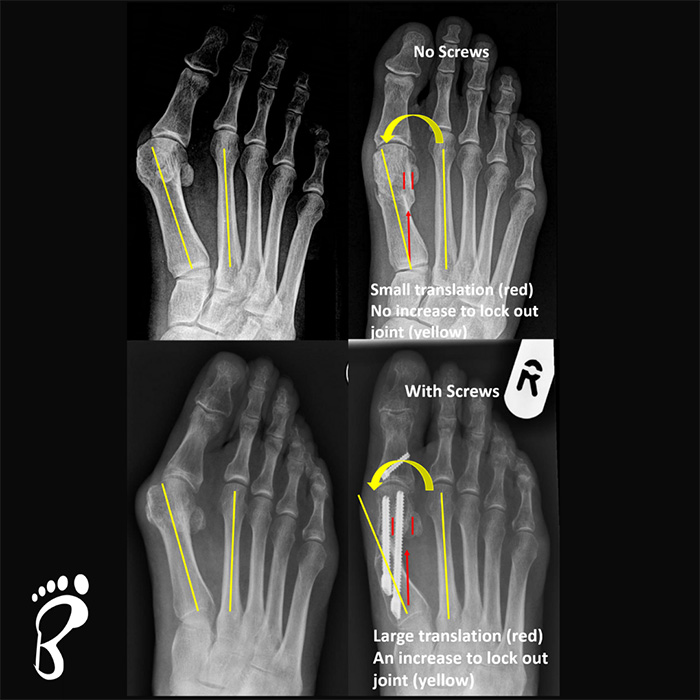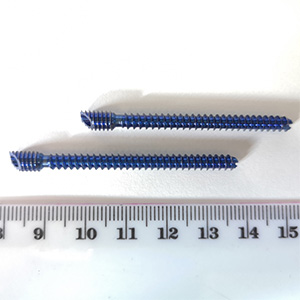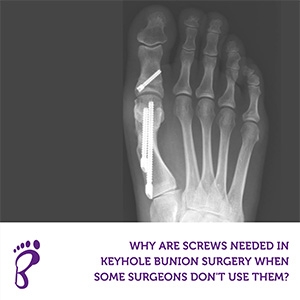There are different surgical techniques that patients may come across when researching minimally invasive (or keyhole) bunion surgery.
In a few cases, surgeons prefer not to use any screws to hold the bunion correction.
In order to achieve a long-lasting correction, without the bunion coming back in the future, I believe the bunion must be shifted back all the way to its original position.
In addition, it is imperative to 'lock out' the unstable mid-foot joint, to prevent future movement and the bunion returning.
To achieve these two important goals, the bunion correction should involve a large translation of the bone, held in this position until the bone reforms, creating the newly aligned toe.
This image explains the difference with and without the use of a screw.

Without the use of a screw, several problems may occur:
- Under correction (the bunion is only partly corrected)
- Loss of correction (the correction slips back to a bunion again)
- Mal-correction (the toe moves and heals into an undesirable position, giving permanent pain or rubbing)
- Recurrence over time (as the mid foot joint is not 'locked out' and made stable)
- Inability to early weight bear (no screws means the correction is unstable and may move upon walking)
- Multiple and prolonged bandaging (the correction relies on the bandage to maintain the correction)
Here is a photograph of the screws I use in minimally invasive bunion surgery.

Patients may have concerns about having something foreign inside the body, however there are several myths around this:
- The screws will restrict movement
Screws used in minimally invasive bunions surgery are not placed near the joint, they just hold the bunion correction.
- I will feel the screws
Patients will not be able to feel the screws as they are placed within the bone.
- The screws can be rejected by the body
Screws are titanium alloy which are inert to the human body in the vast majority of cases. In fact, bone grows around the screw, rather than rejecting it.
- The screws will need to be removed
They can be safely left in forever.
Screws give the advantage of a reliable means of maintaining an excellent bunion correction, without the need for prolonged bandaging. They also facilitate immediate weight-bearing and prevent long-term recurrence of the bunion.
If you have any questions about the minimally invasive technique I use to correct bunions, or would like to book a consultation, please get in touch!

